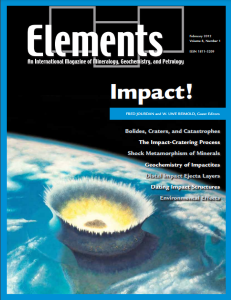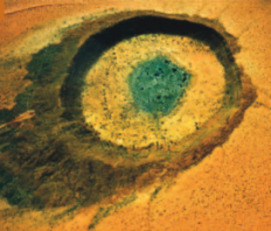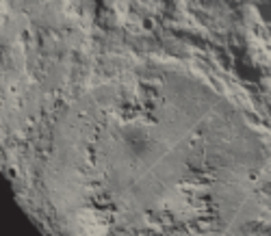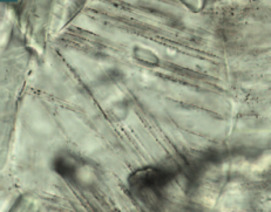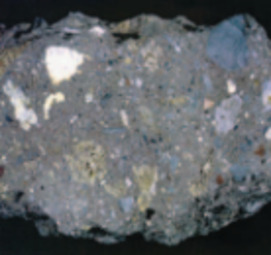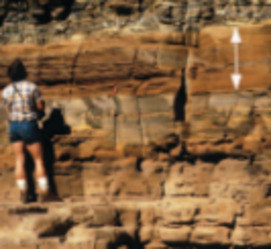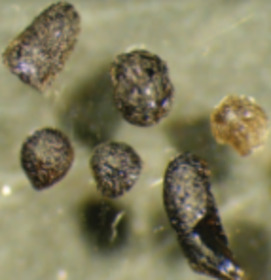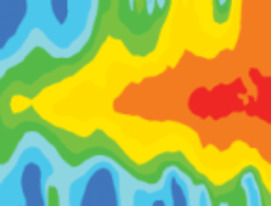
Impact!
Fred Jourdan and Wolf Uwe Reimold – Guest Editors
Table of Contents
Impact processes are central to the formation and evolution of the solar system and the modification of planetary surfaces. On earth, asteroid impacts played a critical role during earth history; they delivered the constituents of our planet, were responsible for the formation of major ore deposits, and affected life on earth. studying impacts and their effects is a very active field at the crossroads of many scientific disciplines, from mineralogy to environmental science. this issue will focus on the mineralogical, geochemical, and petrological aspects of terrestrial impact structures, and in particular on the latest developments in the relevant fields.
- IMPACT! – BOLIDES, CRATERS, AND CATASTROPHES
- The Impact-Cratering Process
- Shock Metamorphism of Minerals
- Geochemistry of Impactites
- Distal Impact Ejecta Layers: Spherules and More
- Dating Terrestrial Impact Structures
- Local and Global Environmental Effects of Impacts on Earth
49e Exposition Sainte-Marie-aux-Mines
Australian Scientific Instruments (ASI)
Bruker
Bruker Nano GmbH
Cambridge University Press
CAMECA
Electron Backscatter Diffraction meeting
Excalibur Mineral Corporation
FEI
International Center for Diffraction Data
John de Laeter Centre
Geochemist’s Workbench
Savillex
SPECTRO
Thermo Scientific
v8n2 MINERALS, MICROBES, AND REMEDIATION
GUEST EDITORS: Anhuai lu (peking University) and Hailiang Dong (miami University)
Studies of mineral–microbe interactions lie at the heart of the emerging field of geomicrobiology, because minerals are the fundamental earth materials with which microbes interact. microbes are found in a number of the earth’s extreme environments and also in extraterrestrial materials. In spite of the diverse geolog ical environments in which microbes are found and the various approaches taken to study them, a common thread—min eral–microbe interactions—connects all these environments and experimental approaches and places them under the same umbrella: geomicrobiology. minerals provide microbes with energy and living habitats, and microbes impact mineral weathering and diagenesis. the recognition of mineral–microbe interac tions has revived the classical discipline of mineralogy, and microbes discovered in various habitats have provided micro biologists with unique opportunities for study. this issue considers microbially mediated mineral dissolution, precipitation, and transformation, and the syn ergistic relation between minerals and microbes for energy acquisition. these interactions have important implications for contaminant remediation.
- Mineral–Microbe Interactions and Implications for Remediation By Hailiang Dong (Miami University) and Anhuai Lu (Peking University)
- Minerals as Substrates for Life: The Prokaryotic View By Gordon Southam (University of Western Ontario)
- Remediation of Chromium and Uranium Contamination by Microbial Activity By Yangjian Cheng (Chinese Academy of Sciences), Hoi-Ying Holman (Lawrence Berkeley National Laboratory), and Zhang Lin (Chinese Academy of Sciences)
- Clay–Microbe Interactions and Implications for Environmental Mitigation By Hailiang Dong (Miami University)
- Microbial Oxidation of Sulfide Tailings and the Environmental Consequences By Olli H. Tuovinen (Ohio State University), Xiancai Lu (Nanjing University), and Hongmei Wang (China University of Geosciences)
- Interactions between Semiconducting Minerals and Bacteria under Light By Anhuai Lu (Peking University), Yan Li (Peking University), and Song Jin (University of Wyoming)
- Impact! (February 2012)
- Minerals, Microbes, and Remediations (April 2012)
- Fukushima Daiichi (June 2012)
- Granitic Pegmatites (August 2012)
- Rare Earth Elements (October 2012)
- Urban Geochemistry (December 2012)
Download 2012 Thematic Preview


